Beam Shear force & Bending Moment Apparatus
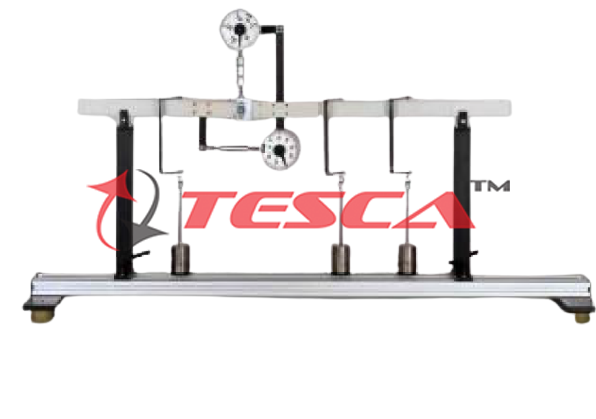
Order Code: 32152
Category: Strength of Materials Lab
Features Application of the method of sections to determine internal reactions of the beam Direct indication of shear force and bending moment at a section on the beam Optional DAQ with ‘LabView’ interface &nbs...
SPECIFICATION
Features
- Application of the method of sections to determine internal reactions of the beam
- Direct indication of shear force and bending moment at a section on the beam
- Optional DAQ with ‘LabView’ interface
Statics observes the effect of forces on a rigid body, ignoring any possible deformations, which may occur in the process. The forces are in equilibrium. In reality, forces always produce an effect in the component, such as deformation. These effects are investigated in the science of the strength of materials. The methods applied in the strength of materials serve to design components so that they cannot be deformed or destroyed by applied forces.
A simple example is a statically determinate bearing-mounted beam subjected to point loads. The reactions are determined from the conditions of equilibrium. To investigate the effect of the point loads in the beam, it is notionally split into two segments. Applying the method of sections, the internal forces and moments are plotted onto the two segments and calculated by way of conditions of equilibrium.
Tesca Beam Shear Force & Bending Moment Diagram includes a beam mounted on two supports. The beam is cut at one point. At that point, there is a low-friction hinge with two degrees of freedom. Two force gauges determine the internal reactions to the externally applied forces at the section. The sheer force is recorded and displayed directly by a force gauge. The The bending moment occurring at the section is recorded by a second force gauge acting on a fixed lever arm. This force readout, divided by 10, gives the bending moment in Nm.
Adjuster nuts on the two force gauges are used to align the beam horizontally and balance out any deflection.
In evaluating the experiment it becomes clear that the sheer force, as opposed to the bending moment, is mostly negligible when designing components.
The various elements of the experiment are clearly laid-out and housed securely in a storage system. The complete test set-up is arranged on a frame.
The well-structured instructional material sets out the fundamentals and provides a step-by-step guide through the experiments
Specifications
Determination of shear force and bending moment on beam mounted on 2 supports
Measurement of shear force and bending moment in a beam by a low-friction hinge with 2 degrees of freedom
Position of the hinge at 1/3 span
2 bearing supports
Loading of the beam by 1 to 3 point loads
Force gauges to indicate shear force and determine bending moment
Bending moment determined by force measurement and lever arm
Adjustable nuts for horizontal alignment of the beam
Steel rule to determine positions of point loads
Technical Specifications
Beam
- Total length: 1000mm
- Span: 800mm
Measuring ranges
- Bending moment via force gauge and lever arm
lever arm: 100mm
Force gauge: -100...+100N
Bending moment: -10...+10Nm
- Shear force: -50...+50N
- Steel rule: 1000mm, graduations: 1mm
Set of weights
- 3x 1N (hangers)
- 12x 1N
- 9x 5N
- max. weight load per hanger: 20N
Optional:
- Usable on ‘Tesca mounting Frame Order Code - 32150
- Data acquisition DAQ software, through USB available in ‘LabView’
Experiments
Calculation of the reactions arising from the static conditions of equilibrium
Application of the method of sections to calculate the internal forces and moments
- Under a point load
- Under multiple point loads
Calculation of the shear force diagram
Calculation of the bending moment diagram
Comparison of calculated and measured values for shear force and bending moment
Scope of Delivery
- 1 experimental unit
- 3 sets of weights
- 1 steel rule
- 1 storage system with foam inlay
- 1 set of instructional material

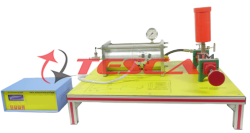
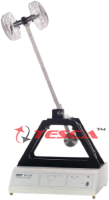
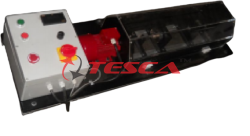
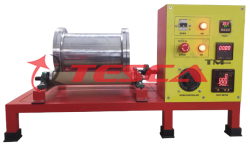
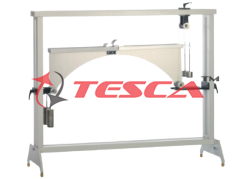
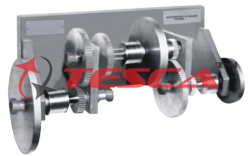

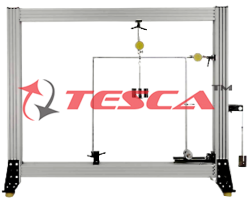
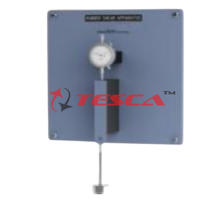

 91-9829132777
91-9829132777